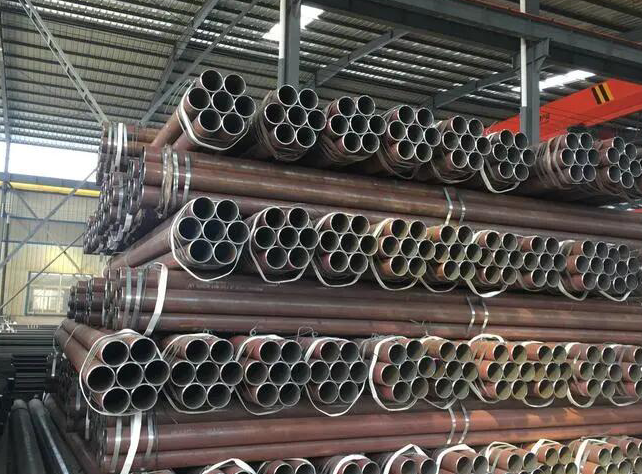
Hydrostatic Test of ERW Tube
1. Pre-test
Slowly increase the water pressure in the ERW tube to the specified test pressure and stabilize it for 30 minutes. If the pressure drops during this period, water can be added to replenish the pressure. The replenishment pressure must not be higher than the test pressure; check whether there is any leakage at the ERW tube interface, accessories, etc. Damage phenomenon; if the pressure test is stopped in time, find out the cause and take corresponding measures before retesting the pressure.

2. Main test phase
Stop injecting water to replenish the pressure and allow it to stabilize for 15 minutes; when the pressure drop does not exceed the allowable pressure drop value after 15 minutes, reduce the test pressure to the working pressure and maintain constant pressure for 30 minutes. Conduct an appearance inspection of the ERW tube. If there is no leakage, the water pressure The test passed.
3. Precautions for ERW tube hydraulic test
(1) The basis for determining whether the test is qualified is the allowable pressure drop value and the allowable water seepage value, which are determined according to the design requirements. When there are no requirements in the design, one or both of the values should be selected according to the actual situation. Only after passing the requirements can the ERW tube be run with water.
(2) When measuring the actual water seepage amount in the hydraulic pressure test, the water injection method should be used.
(3) When two or more tube materials are used, the tests should be carried out separately according to different pipe materials. If separate test conditions are not available, combined tests must be carried out, and if there are no requirements in the design, the most stringent standard among the test pipe materials should be used for the test.
(4) Test length Unless required by the design, the length of the ERW tube for hydraulic pressure testing should not be greater than 1km; for pipes that cannot be tested in sections, it should be determined by the relevant engineering parties based on the specific conditions of the project.
(5) The water supply pipeline must pass the hydraulic pressure test, be flushed and disinfected before being connected to the grid, and can be put into operation only after the water quality reaches the standard.
In the hydraulic test of the ERW tube, it is often found that the rupture opening is broken off from the weld line of the ERW steel pipe, which indicates that the strength of the welded part is lower than that of the base metal. Through the experimental analysis, it is found that the thickness of the sample in the weld is reduced if the internal scratching groove is formed on the inner surface of the steel pipe during the removal of the burr in the weld. In tensile tests, samples are easily broken from this point.
The water pressure test of the water supply pipeline is a means to evaluate the final quality of the steel pipe laying. Generally speaking, we have two requirements for the static hydraulic pressure test: one is to correctly reflect the leakage of the pipeline; second, the pressure test without problems, and the interface will not be damaged by the pressure test. On the contrary, it will affect the quality of the project, or rework, retest, resulting in waste, and even no personal safety accidents.
In addition, when API SPEC 5L is used for the tensile test of the weld, the residual height is selected to remove or retain the weld, and the weld breaks often occur. This indicates that the strength of ERW steel pipe weld is lower than that of base metal. There are two reasons for the analysis: first, the strength of the welded joint of the steel tube is lower than the strength of the base metal; the second is to scrape the inner surface of the steel pipe when the burr is removed in the weld. Due to the unreasonable transition between the welding position and the base material, the trench or the residual burr will cause the stress concentration, so the overall structure strength of the weld is lower than the structure strength of the matrix material. Therefore, the transition shape between the welded parts of the steel pipe and the base metal should be optimized to ensure the overall quality of the steel pipe.


